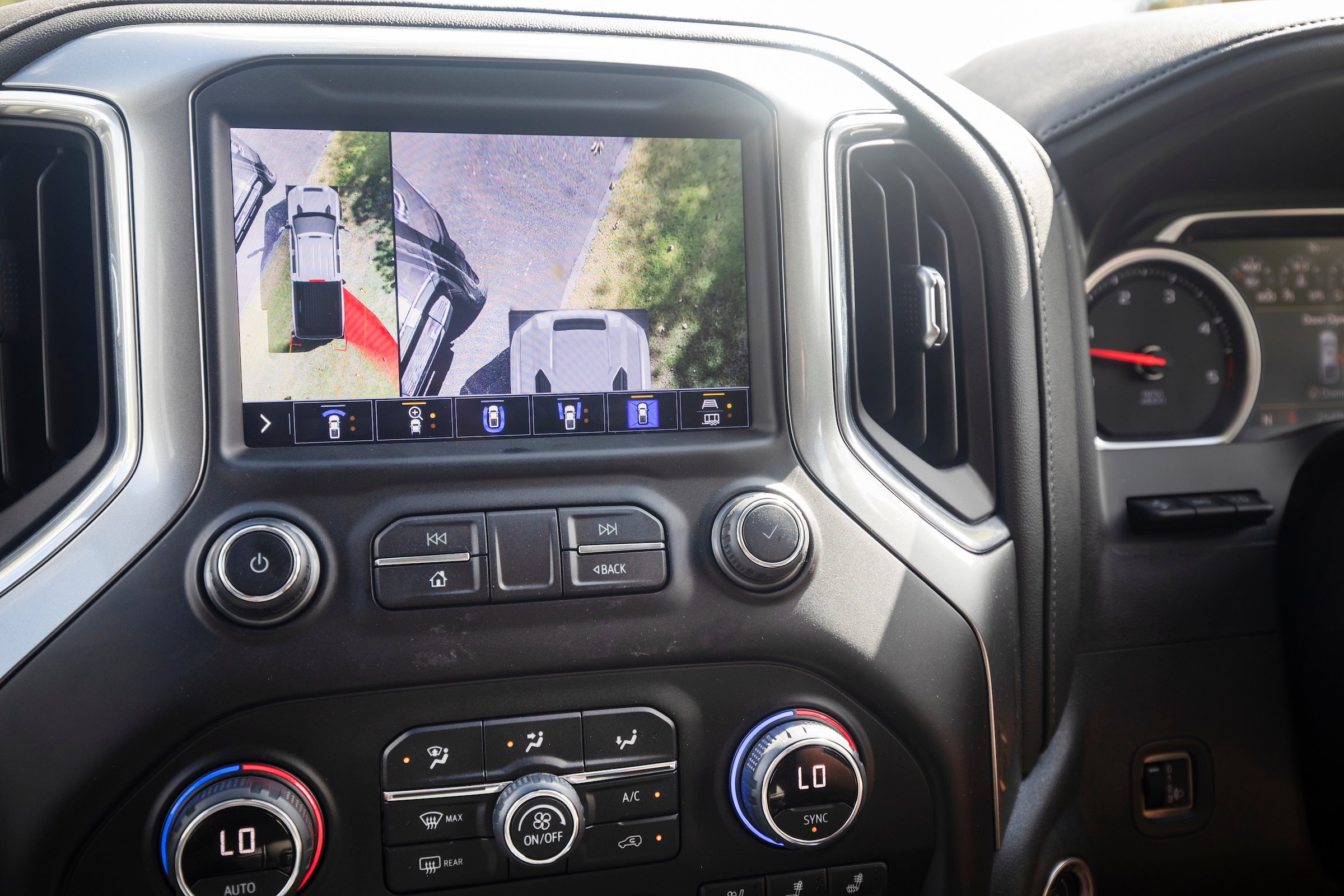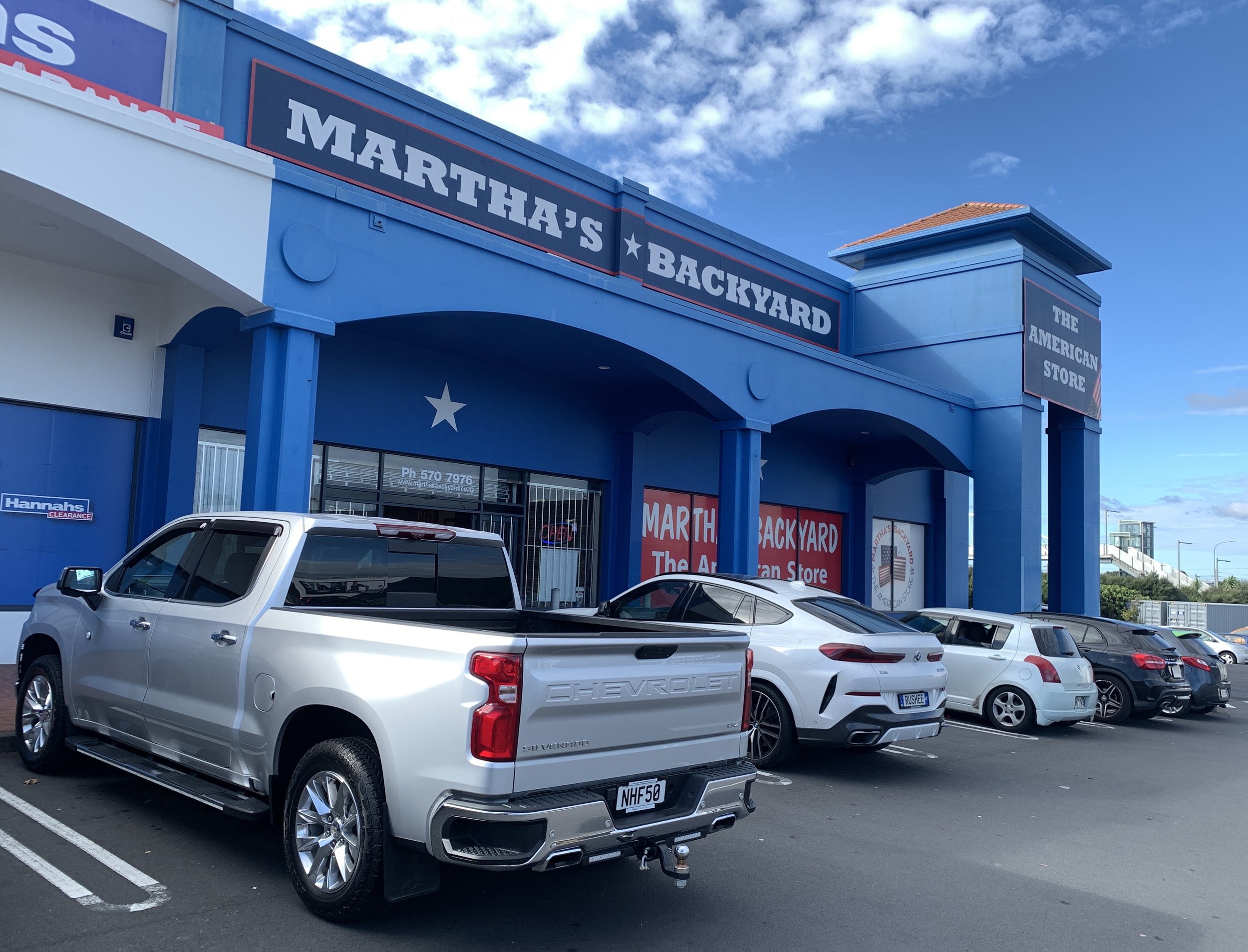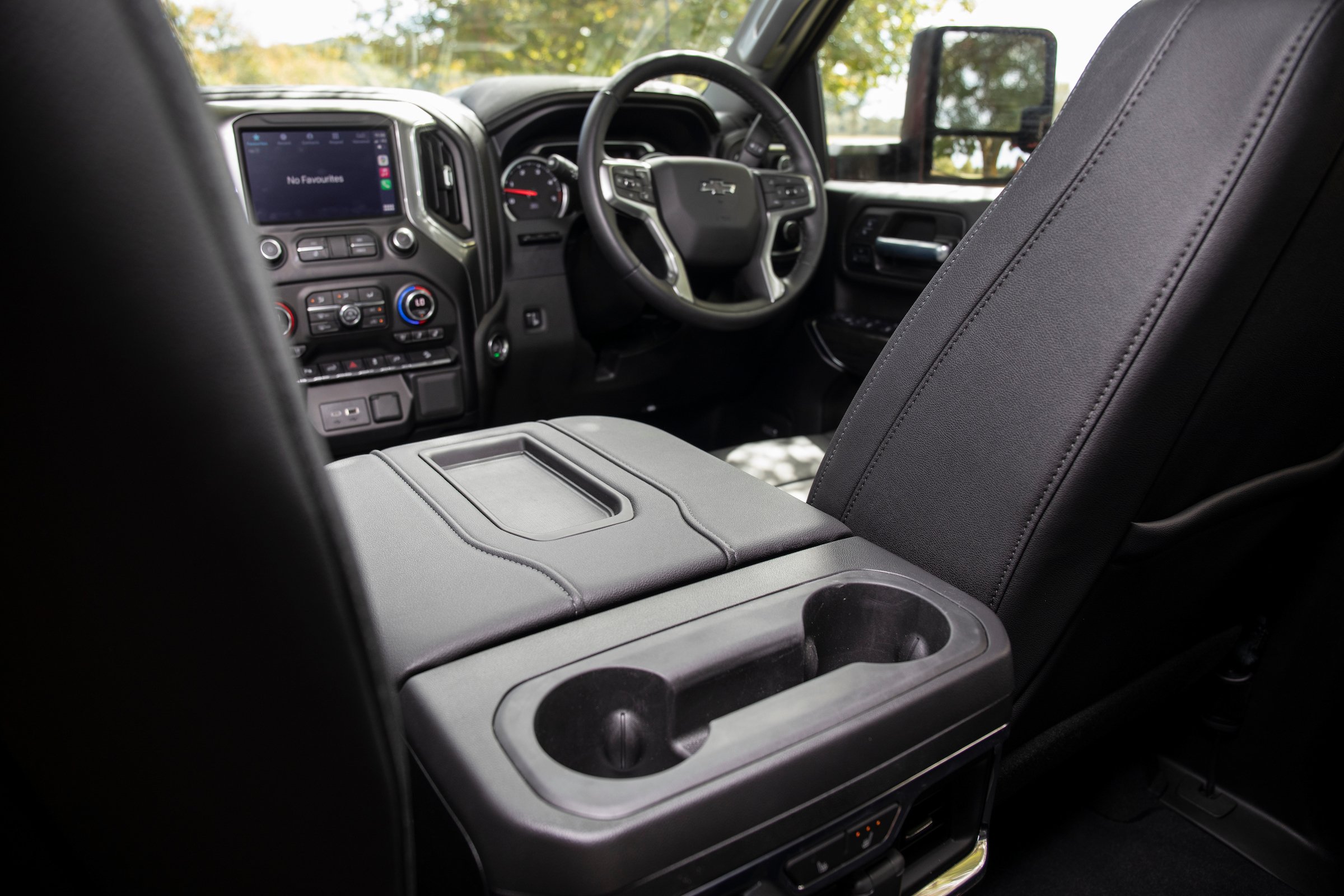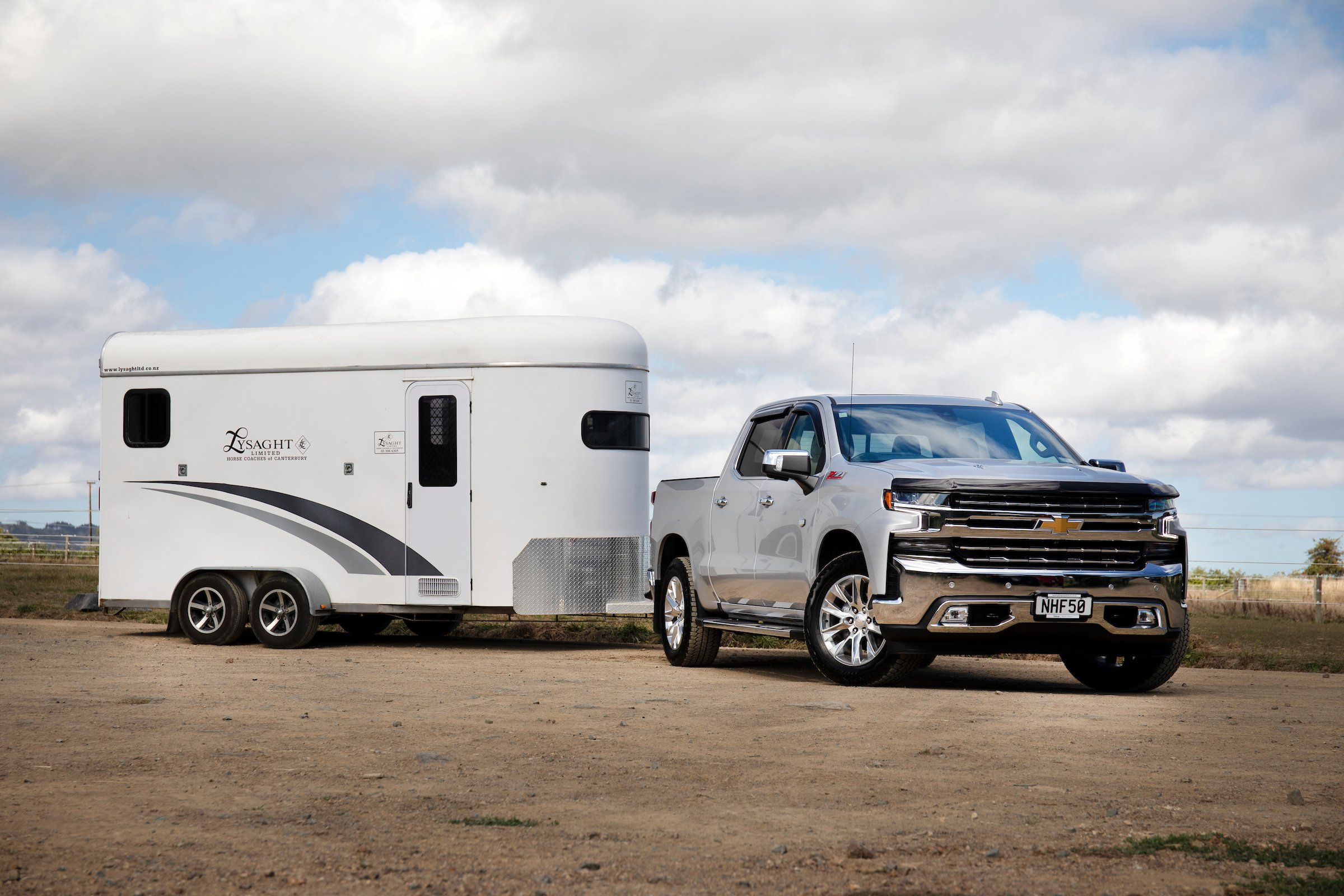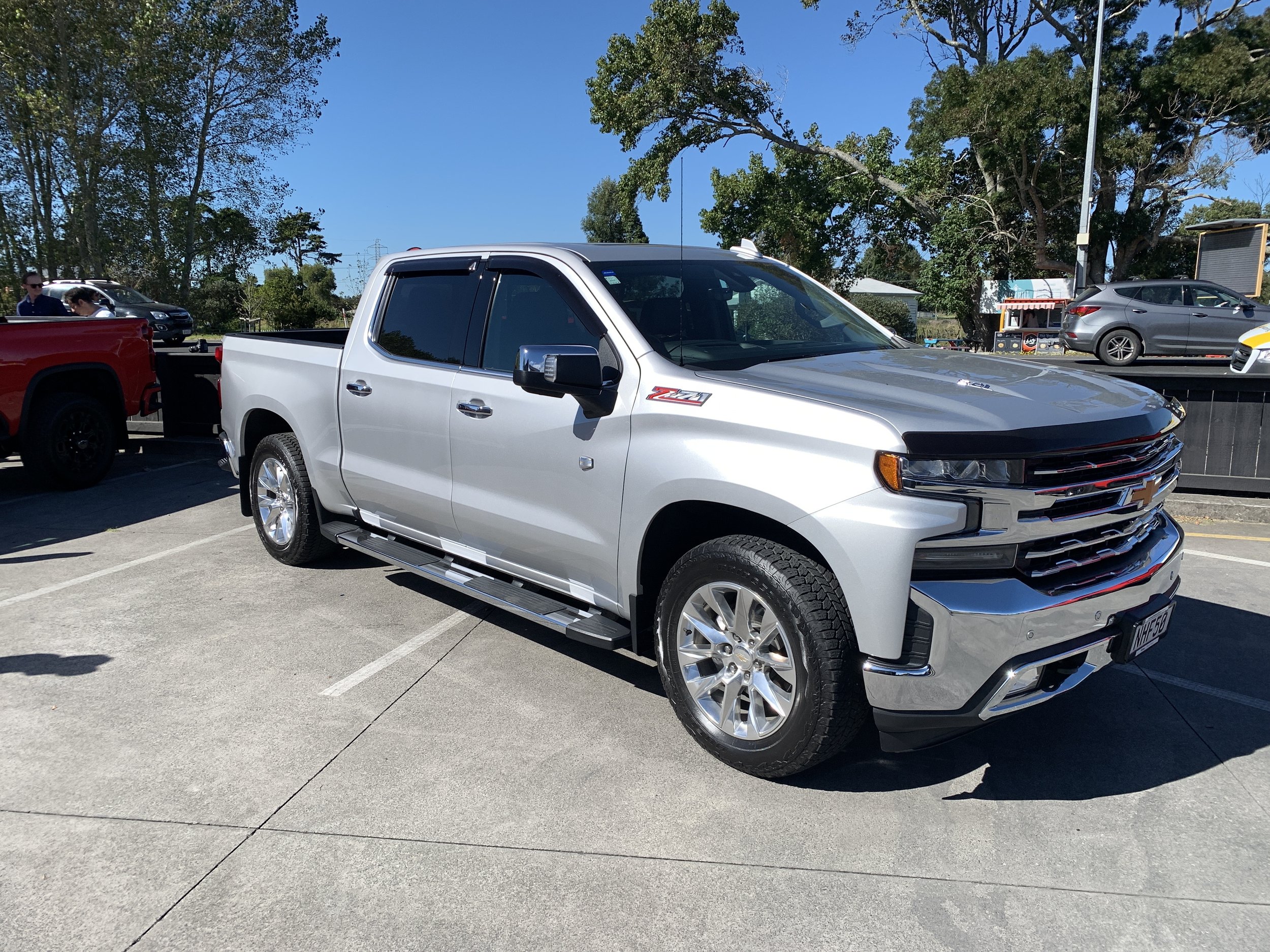Chevrolet Silverado 1500 LTZ Premium roadtest review: The buck stops here
/At a time when so many are prone to call out regular diesel one-tonne utes as ‘gas guzzlers’, where does a full-sized American pick-up stand?
Price: $130,990
Powertrain: 6162cc petrol V8, 313kW/624Nm, 10-speed automatic, claimed combined economy 12.3 litres per 100km, 283g/km CO2.
Vital statistics: 5913mm long, 2063mm wide, 1933mm high, 3750mm wheelbase.
For: Surprisingly easy to drive for its size, impressive RHD conversion, super choice for heavy-duty towing.
Against: Increasingly challenging to justify in petrol format, overfills some car parks.
WITH Earth’s future patently requiring us to cut back bad habits, it’s impossible even on the best of days for anyone with a conscience not to feel at least a touch guilty when driving a vehicle that’s anything but eco.
All the moreso in mid-March, when nightly climate doom stories were only being pushed down the news roster because of a greater potential threat to our well-being.
Mr V.Putin’s latest antics have simply added additional manure to the already worryingly deep cesspool we’re stuck in.
Incursion by his regime into the Ukraine occurred in the week leading to this assignment. You know the rest. Petrol prices raced to hitherto unreached heights.
Watching the per litre price of the top shelf stuff demanded by the vehicle I was about to drive climbing above $3 a litre was galling.
If ever there was a time not to be seen in a big rig with reputation for slurping rather than sipping.
As poorly-judged as the idea of driving from Auckland to Wellington, in a Chevrolet Silverado 1500 LTZ Premium - yeah, the one with the 6.2-litre petrol V8 – now seemed, it had to proceed, for multiple reasons. One, I have to admit, being nagging desire to box tick time in one. I set off in vague hope something positive would come from it.
And it honestly did, with a surprisingly decent – for the type – fuel burn.
Paydirt for me was an average economy of 10.3 litres per 100km for the entire trip. That’s a clear two litres below the official cited average. I’ve known many a V8 petrol car to deliver worse. From experience, too, some diesel utes do no better. If that’s not worth a ‘yippee freaking ki-yay’, I don’t know what is.
Impressed? Those who see vehicles of this calibre as planet killers won’t be budged. They will demand nothing less than radical change.
Which does seem to be on the horizon. General Motors Stateside has developed an electric variant on sale from 2023, developed as an EV from the ground up and largely unrelated to the existing combustion-engined truck here.
The figures look good: Up to 640kms’ range via a 492kW/1057Nm dual-motor four-wheel-drive powertrain, 0-100kmh in under 4.5 seconds, a battery pack specified up to 200kWh capacity, with 120V and 240V charging as well as DC fast-charging. Towing capacity of 4536kg to start with, growing to 9072kg in time.
How and when NZ might see it is not entirely straightforward. The US will come first and its far from clear how easy it’ll be to convert something like this to right hand drive (assuming the current arrangement continues). But it does set a course into the future, no bones about it.
For a few more years yet, though, it stands likely we will continue with Silverado as it presents here. A modernised no-excuses interpretation of a fading six-gun totin’ past. A heavily-chromed, heavily built, heavy-on-the-freedom juice poster boy for excess as only Americans can interpret it. The automotive equivalent of ‘Full Metal Jacket’s’ Gunnery Sergeant Hartman. Deep breath … move on.
What might seem remarkable is that the LTZ isn’t even the largest of its kind from Chevrolet. While Silverado is classified as ‘full sized’ in its home market, the 1500 line from which it spawns is, strictly speaking, the smallest member of that clan. There are also brawnier 2500 (also now represented here) and 3500 units. Well, you know the Americans. In their world, big is never big enough.
And in ours? Even the smallest Silverado is easily large enough to make any one-tonne ute appear puny. Locating it when coming out of Auckland airport to meet me was a cinch for my wife; all she had to do was look for the most substantial silver thing out in the short-term area that wasn’t a bus.
So, anyway, back to this matter of my dalliance with the Devil. It’s done. And, I have to say, that after all those namby-pamby misgivings, it went really well. Yes, a few comments were chucked our way, but no outright public shaming. Truck and occupants were physically unscathed.
And, at the end, a miracle.
As you’d expect, the word ‘moderation’ does not feature strongly in any literature related to the Silverado. While the V8 now comes with a clever fuel-stretching cylinder deactivation system, it has the smallest tank fitted to any Silverado – ‘only’ 91 litres versus 137 in the larger type sold here.
I don’t like to think I’m as gorse-pocketed as some colleagues when it comes to putting additional fuel in press vehicles, which always turn up with a full tank.
Yet, in this instance, with an ‘empty to brimmed’ happy meal looking set to be an almost $300 hit, the idea of having to feed the beast myself didn’t overly thrill.
Maybe I ran it close enough. I’m pretty sure this big rig gave out a slight ‘time to eat’ cough in the last minute before I reached my final destination and shut it down for good.
But God bless America. The big guy met the challenge, even after I’d upped the odds against success by tripping around more than envisaged.
With the new Transmission Gully shortcut still out of bounds during this period, the most direct distance from A to W was 644.5km.
The test had actually notched up 826.5kms, from me having messed about in Auckland buying up supplies (well, a big bag of treats from an American food warehouse seemed appropriate) then also using the truck driving around Cambridge and Hamilton while we had a great weekend with friends who live there.
To be fair, the Silverado was a surprisingly good accomplice in this unexpectedly-enviro endeavour. If anything, smooth and light on the brakes and throttle, the engine rumbling along at 1500rpm, which is just 500pm above idle, made it feel especially amiable and it was untroubled holding pace in the traffic stream. Relaxed driving fits in with the overall character, too.
While the ‘z’ rating on the bonnet badge is Chevy-speak for sporty driving and it obviously has the gumption to kick up some dust (and maybe even burn some rear rubber), it also needs room, especially for slowing down, and consideration for its bulk and height when cornering is also important.
Okay, so the last 100km of the trip was undertaken with the air con off, and with an increasingly nervous eye on the fuel read out. Did you know that the fuel consumption computer quits at point of estimating just 70kms’ range left? Neither did I. Until it did. From thereon, it simply started showing increasingly dire ‘low fuel’ warnings.
In theory, I was fine. Just 24kms’ left to travel by that stage. In reality … well, having managing to twice drive-by the hard-to-spot drop-off point, I didn’t feel emboldened to go for a third.
Instead, I parked up, switched off, finally found the place on my phone’s Google Maps – which runs as the model’s sat nav (as there is no embedded native system) - and confirmed its location with a phone call, then walked the 100 metres’ distance to hand over the keys with instruction about where I’d parked. Which was hardly necessary, given its size.
So would I, could I …?
No. This isn’t a story of conversion. As much as the ‘resides rurally, tows stuff, has animals’ aspect to my lifestyle kinda conforms to the ownership prescriptive, this would never be a vehicle for me. Nothing wrong with utes, but there’s a limit. This one exceeds it. Not just in respect to the carbon footprint but the imprint as a whole.
Though I found it easy to acquaint to its overall dimension, the intimidatory nature of its lane-filling presence is always in mind. Reminding myself that all anyone would see of it in their rear-view mirror was the bottom part of the ginormous chromed double-deck grille in their rear vision mirrors kept me in check.
Getting used to driving is one thing; parking another. When visiting friends, it only just got through the front gate and stayed on the front lawn as it patently wasn’t going to squeeze past their house. Out in the public arena, I found myself being extra careful when choosing park bays. It’s too long for some and
doesn’t leave much spare width between the lines in angle parks, either.
I discovered this when popping into an American BBQ joint (well, you sorta have to) to pick up some food. A small crowd had gathered on my return. Enthusiasts keen to chew the fat? Sort of. Transpired they were – thankfully good-natured - occupants of the utes I’d slipped between. They’d found that, while they could still reach their doors, they couldn’t open them, as they fouled on the Chev’s running boards. Dang.
So why buy? There’s only one valid reason and it’s not so you can pretend to be a displaced Texan. Logically, you have need to make use of that one big strength.
With Covid having pretty much killed off overseas’ travel, a lot of Kiwis have in the past two years taken to buying domestic use recreational toys: Caravans, two and four-bay horse floats, water craft.
In respect to all that stuff, it seems buying a commensurately-sized hauler, with a genuine heavy-duty towing rate would seem not just sensible but a safeguard for yourself and other road users.
Strong cross winds, emergency stops, sudden avoidance manoeuvres … you need a vehicle to maintain control, to hold its ground. Even when the loading weights are within safe margins, commonplace large SUVs and one-tonne utes that are dwarfed by their loads aren’t of that calibre.
The Premium isn’t fazed. It’s right-sized, with every dimension reading like a phone number, has such a solid stance you’d think it’d not be fussed by anything Nature could biff at it this side of a tornado and is rated to haul 4.5 tonne (assuming it’s just a driver and there’s nothing on the deck). And this is the puny one in the family. The slightly larger HD (heavy duty) can cope with six tonnes. Wow.
When so much is built for big, it seems quirky deck load capacity isn’t. It’s a mumble-mumble moment explaining why it is that a vehicle of such commanding presence cannot cope with more than 712kgs on its back. I’d wager some Texas restaurants serve larger steaks.
America being the place where they can even make something as simple as a cheeseburger complicated, it’ll be no surprise that Silverado comes in almost a dozen body, engine and specification fit-outs. Here, not so much. We just get the crew cab, which means four doors and seating for five inside. There are some accessories, but basically there’s a lot more choice in the branded clothing line.
It’s a shame the biggest non-negotiable is the engine. No argument, this EcoTec 6.2 fits in nicely with the whole ethos. I get it. And it is a lovely thing to sit behind; primarily because it is so massively relaxed in general use but clearly could become a really gnarly bear if you were to poke it with a stick.
The low revs operability and how it slurs so beautifully through the 10-speed keeps it civilised. Dynamic Fuel Management cylinder deactivation tech that on occasion (though I’d challenge anyone to pick when) will shut down up to six cylinders on the fly if the driver’s right-foot allows was also doing its thang. Yet, realistically, DFM is only effective when the truck is driven without load. Add on the kilos and it’s very much a case of suck it and see.
As much as the Silverado gains decent monthly sales volume in this form, you have to wonder how much better this version would do if it came with a compression-ignition choice. Or whether that ‘if and when’ electric will be its pick-me-up. In the here and now, you can see why GMSV alludes that most owners putting their fuel costs back through their businesses.
In terms of fitout and presentation, it’s a damn fine truck. Silverados come in Z71 spec, which tailors for work and play as it includes a low-range transfer case as well as a locking rear diff, underbody protection and passive twin-tube shock absorbers. It also gives hill descent control.
You don’t have to worry about finding an after-market tow kit; they come with all that, too. Indeed, the provision is more than just a tow bar. The electric trailer brake controller and a rear-view camera with hitch guidance is also imcluded, plus LTZ level earns a trailering app integrated into the entertainment system and trailer theft alert.
Premium, meantime, tends to the comfort side. You don’t see the outright pin-perfect opulence that a high-end European luxury car of similar price might deliver, because Chevrolet plastics and leather are unmistakeably North American and, secondly, it is a work vehicle so trimmings are designed to be hard-wearing. Yet by category standards, it’s a swank spot.
The seats in both rows are not only covered in thick and resilient cow hide but all positions (save the centre rear) having heating and cooling. It gets six USB ports, a head-up display, plus wireless Apple CarPlay and Android Auto are included.
Special treat features include a power-operated tailgate that both opens and closes at the touch of a keyfob button and quite a few blindspot cameras, with ability to toggle between 13 different views and GM’s Advanced Trailer System.
There’s no ANCAP crash test score but safety tech suite is generously loaded, with the most curious feature being the cross-traffic alert’s ability to vibrate the left-cheek side or right-cheek side of the driver’s seat according to the direction cars are coming from. Who says Americans ain’t sophisticated?
And, yeah, it’s really roomy. Hugely so. I’m 1.8 metres tall and had to shift the seat forward to achieve the best driving position. By the way, the unanimous opinion of those front chairs was that they’re supremely comfy for long-distance driving.
The deck is awesome in its fitout. It comes with a durable plastic liner that makes it easier to slide loads in and out, there are 12 tie-down points and LED bed lighting to illuminate the area in the dark. The shape was perfect for the big mirror bought at a Waikato store on a whim. That bathroom-bound bargain (subsequently swapped for a smaller one when we realised it wouldn’t fit) was ultimately shifted into the rear of the cabin for our two-up drive home. Tipping the rear seat base up allowed plenty of room.
I’m hugely impressed by the conversion job. Units are bought from the assembly line – in the United States or Mexico – then shipped to a bespoke facility in Melbourne where they are disassembled and rebuilt, a process that delivers all the requisite RHD-specific equipment and modified or newly engineered parts.
It’s a heck of an undertaking, bringing quite a few challenges, but no real glitches. Sure, the truncheon-sized gearshifter would be better located on the left of the steering column, as a mirror image of how it presents Stateside, but that was obviously an engineering impossibility. There’s enough room on the right make it work. It’s awesome how much more - like getting the wipers to operate in a right-hand drive phase – have been sorted.
There’s talk that some elements are produced to a reportedly higher spec than their original versions. I’d believe it. The quality of presentation and fit of the items that have to replicated in Australia (which includes the whole dashtop and instrument cluster) is exemplary. You could well find the ‘Aussie rebuilt’ product to be of better quality than the US original.
Still, none of this can divert from the core issue.
This is a time when even orthodox diesel utes are being increasingly considered ‘gas guzzlers’, when everything emitting more than 192 grams of CO2 is being taxed and when the starkest warning yet about our planet’s ongoing health has been shared.
Going big American-style has always demanded firm resolve. When taking the petrol route, it increasingly asks for an ever-thickening skin and, realistically, a blind eye and a deaf ear.


